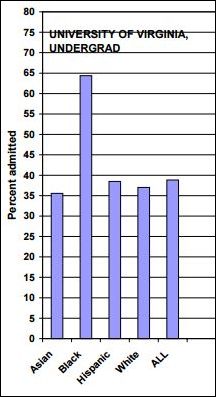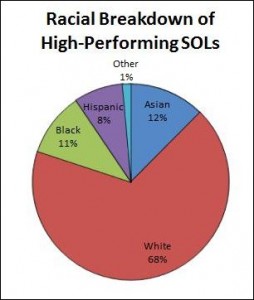Many Asian-Americans are getting frustrated with the enrollment caps on Asians at some of the United States’ most prestigious institutions of higher education. As Jason Riley recently opined in the Wall Street Journal, Asian-Americans are the new Jews, academic high achievers who are under-represented on top college campuses in comparison to their qualifications.
A coalition of more than 60 Asian-American groups is asking federal authorities to investigate possible racial bias in undergraduate admissions at Harvard University. Harvard, like many prestigious universities, makes extra room for “legacies,” mostly white, in appreciation of, or expectation of, generous alumni contributions. At the same time, Harvard also considers race/ethnicity among other factors when admitting African-Americans and Hispanics. That leaves non-legacy but high-achieving Asian-Americans in the cold at a competitive disadvantage. Writes Riley:
Asians have some of the highest academic credentials but the lowest acceptance rates at the nation’s top schools, a result that the coalition attributes to “just-for-Asians admissions standards that impose unfair and illegal burdens on Asian-American college applicants.” A 2009 paper by Princeton sociologists Thomas J. Espenshade and Alexandria Walton Radford found that “Asian-Americans have the lowest acceptance rate for each SAT test score bracket, having to score on average approximately 140 points higher than a white student, 270 points higher than a Hispanic student and 450 points higher than a black student on the SAT to be on equal footing.”
Bacon’s take. So, I began wondering, what is the track record of Virginia’s public universities? Are Asian-Americans getting a fair shake in the Old Dominion? I had no idea what to expect, but I crunched some numbers.
Asian-Americans represented 5.5% of Virginia’s population in 2010, according to the U.S. Census Bureau. (The percentage is probably higher today.) But that’s not a proper basis for comparison. Asians out-perform all other racial/ethnic groups academically in high school, so a better basis of comparison is the percentage of academic high achievers. There may be different ways to calculate that number, and I welcome any input on different ways to do it. What I did was consult the Virginia Department of Education’s online build-a-database tool to ascertain a racial breakdown of students who scored “advanced pass” in their SOLs for all grades. For each racial/ethnic group, I averaged the advanced-pass rate to derive a composite score, as seen in the pie chart above.
By this metric, Asian-Americans comprise 12% of the top-scoring students in Virginia K-12 schools. For purposes of the argument I’m making, this is a very conservative measure. The numbers could well be even more skewed for metrics of college-ready students such as SAT scores or AP exam results.
So, how does the Asian enrollment compare for Virginia’s most selective institutions of higher education? Here are the percentages for Asian undergraduate enrollees at Virginia’s highest-ranked public universities:
The University of Virginia is dead-on target but the other three fall far short. While suggestive enough to demand digging deeper, these numbers are not, by themselves, proof of discrimination against Asian-Americans. Perhaps one reason there are so few Asians at James Madison University, to take one example, is that the institution gets very few Asian-American applicants. A better basis of comparison is the percentage of applicants accepted at each university.
 While I could not find current racial breakdowns of admission as a percentage of applicants in an online search this morning, I did locate a research paper that provided some statistics for fall 2003 admissions. The paper, “Affirmative Action at Three Universities,” compared undergraduate admissions at the University of Virginia and North Carolina State along with law school admissions at the College of William & Mary.
While I could not find current racial breakdowns of admission as a percentage of applicants in an online search this morning, I did locate a research paper that provided some statistics for fall 2003 admissions. The paper, “Affirmative Action at Three Universities,” compared undergraduate admissions at the University of Virginia and North Carolina State along with law school admissions at the College of William & Mary.
While Asians were admitted at a slightly lower rate than Hispanics or whites at the University of Virginia, the rate was not severely out of line. Any discrimination in admissions was markedly in favor of African-Americans, not against Asians. At the William & Mary law school, Hispanics were severely under-represented, while Asians were somewhat under-represented. (Please note: This data is more than 10 years old and not necessarily reflective of current patterns.)
This scatter-shot evidence suggests that Asians may face discrimination when applying to some of Virginia’s top-tier universities. But the evidence is impressionistic at best. It would be necessary to get better data before drawing definitive conclusions. On the other hand, I would argue that the evidence is strong enough to warrant taking a closer look.




